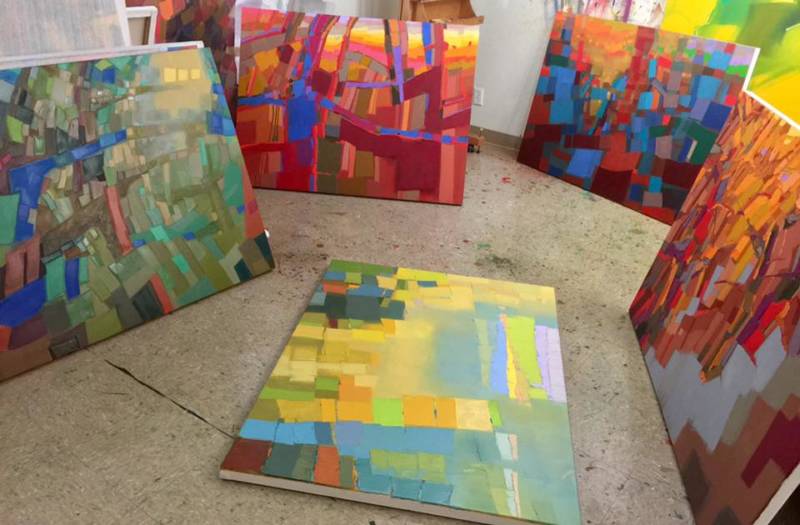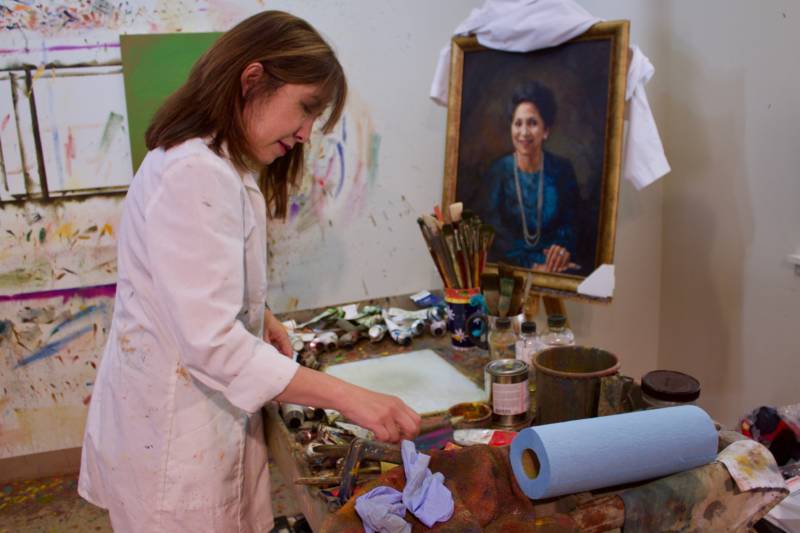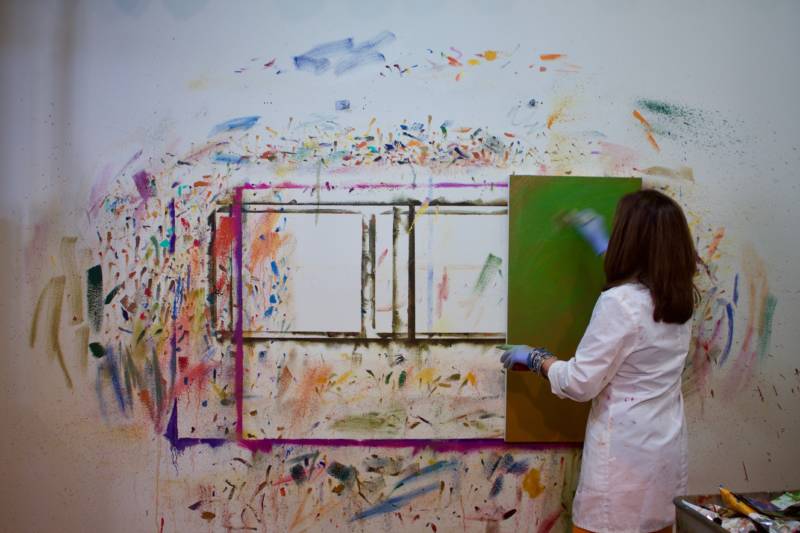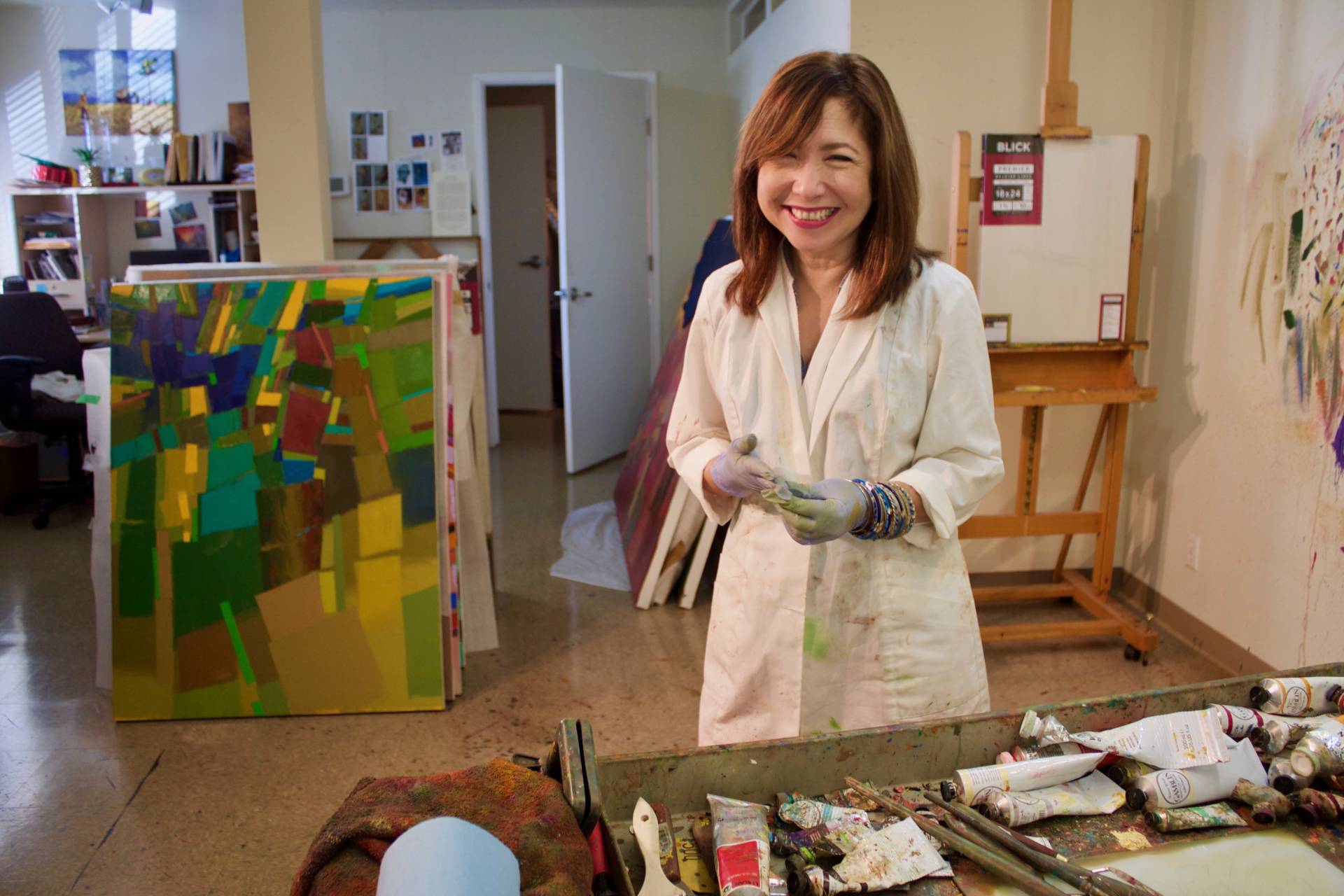
Rather than directly copying these views in her work, she strives to capture the feelings that nature evokes with oil paints, textures and brilliant colors.
Barrera-Castillo is currently gearing up for her upcoming solo exhibit Patterns of Nature, opening Oct. 23 at the Philippine Center in San Francisco. One piece selected for her upcoming show, “Complimentary Sunset,” leans against her studio wall with shapes both warm and cool, evoking the scene that she sees outside her window every night in the North Bay.
As a nature-lover who moved to the Bay Area about 30 years ago, it worries her that she feels the summers getting hotter, the colder days growing fewer and farther between, and natural disasters tearing apart communities across the country.
Just one week after speaking with KQED, in fact, her family evacuated their Green Valley home as fires tore through the North Bay, destroying scenery that now lives on only through memory, photographs or paintings. Her art remains a tribute to that beauty, and her personal plea to encourage humans to take better care of the natural world around them.
Though Barrera-Castillo always possessed a love of art and nature, it took nearly half a lifetime of artistic self-discovery to cultivate her unique abstract style.

Growing up in a rural town in Cebu, Philippines, Barrera-Castillo’s father, who was a photographer himself, took a young Janine with him when he explored the island to take photos of landscapes.
As she grew up, the focus of her formal art training emphasized tradition rather than creativity. While attending the University of the Philippines, she spent her time learning to emulate classic Western European-style paintings.
On top of that, teachers constantly told her to “paint like a Filipino,” a directive she couldn’t wrap her mind around.
“A Filipino will always paint Filipino even if he’s painting the Eiffel Tower in Paris — he can’t help it because he’s looking at it through Filipino eyes,” she says now, with a laugh.
After graduation, she earned a scholarship to Academy of Art University and immigrated to the U.S. Not only did she struggle to assimilate into a different culture, but she encountered the demands of an entirely new artistic philosophy in America. Her professors told her the opposite of what she was taught back home, encouraging her to break away from the traditional styles instilled in her.
She also felt frustration at seeing her male peers booked in shows more often than women. And as she grappled with the struggle to find her artistic identity, she made the decision to become a wife and mother.
“There’s women who are holding on to what [they] love to do and at the same time trying to fulfill [their] obligations as a mother or wife,” she says. “Some women sacrifice one for the other, some women try to do all.”
For years, she made the sacrifice.
“It’s really painful not to be able to paint if you’re an artist,” she says, remembering a period in life when she stopped painting completely. “It just really messes you up as a person.”

But once her children grew older, Barrera-Castillo realized a part of herself felt missing.
She began to make friends with her brushes and paints again, spending time in her studio without the pressure to create. Slowly but surely, over several years, she put oil to canvas again and found her meditative rhythm through abstract landscapes, a way to honor what she loves most.
Barrera-Castillo’s current style is a reflection of her evolution as an artist, as an immigrant, as a mother — and most of all, as a lover of the environment.
“Even though my work looks like pleasant paintings with pretty colors, this is my way of paying tribute to whatever we still have right now, which can easily just go,” she says. “I wish we can preserve that for many generations to come.”







